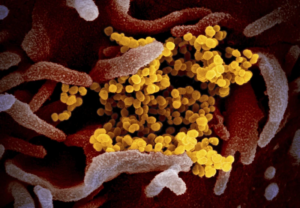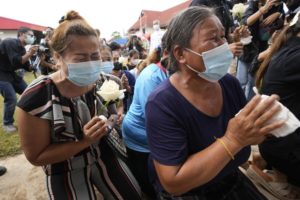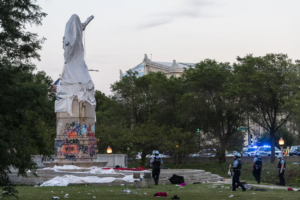People across New York state surrendered thousands of firearms in exchange for gift cards over the weekend in what the attorney general’s office called a “historic” gun buyback event.
The state hosted nine simultaneous gun buybacks on Saturday, yielding more than 3,000 guns, including 185 “assault rifles,” 1,656 handguns and 823 long guns, according to the office of New York Attorney General Letitia James.
“Gun violence has caused so many avoidable tragedies and robbed us of so many innocent New Yorkers,” James said in a statement, calling every gun surrendered “a potential tragedy averted.”
What is a gun buyback program?
Gun buyback programs in the U.S. have been around since the 1970s. They aim to reduce gun violence by compensating people who voluntarily turn over firearms to a public agency or private organization, typically at the county or city level, according to a review of the programs by the RAND Corporation in January.
Guns turned in at buyback events are usually destroyed or reduced to raw materials and repurposed, according to the review. Sometimes law enforcement officers check the weapons to determine if they are associated with known crimes.
There were an estimated 550 gun buybacks in 37 states between 1988 and 2021, according to research from three public health professionals cited in the review.
During the 2020 presidential election cycle, multiple Democratic candidates expressed support for a mandatory government buyback of “assault weapons.” President Joe Biden has previously expressed support for a voluntary federal buyback program.
$500 for an ‘assault rifle’ or ‘ghost gun’
In New York, people were allowed to turn in as many weapons as they wished, with no questions asked and no ID required, according to the attorney general’s office. Guns were required to be unloaded and placed in a plastic bag, paper bag or box, and they were allowed to be transported in the trunk of a vehicle.
The program accepted “assault weapons,” handguns, rifles, shotguns, homemade or 3D-printed handguns, replicas and nonworking guns. Rewards started at $25, and “assault rifles” or “ghost guns” went for $500 each, according to the office.
“Assault weapons” typically refer to semiautomatic firearms with military-style features that allow shooters to fire large numbers of rounds quickly. “Ghost guns,” also known as privately made firearms, are often assembled from kits purchased online or 3D-printed. They don’t require the typical background checks for purchase and do not have serial numbers.
What is an ‘assault weapon’? With ban on AR-15s, Washington joins these states in prohibiting them.
What is a ghost gun? A soaring number are being used in crimes.
The attorney general’s office did not immediately respond to request for comment on how many people participated in the buyback events or how much the state paid out.
James has removed more than 7,000 guns from New York communities since taking office in 2019, according to her office.
The New York City Police Department also has an anonymous buyback program called “Cash for Guns,” which offers $200 to anyone who surrenders a gun.
Are gun buybacks effective?
While gun buyback programs are popular, there is little evidence to show they’re effective in measurably reducing gun violence, even if they do prevent some incidents, the RAND review found.
The programs are cheap, easy to implement and less politically divisive than policy change, the review noted. They also give officials something to point to as a tangible action on a major issue. But only a small fraction of firearms in a community are surrendered at these events, the review found.
There is some evidence to suggest that national firearm bans and mandatory buybacks led to reductions in gun violence in other countries, the review found. Australia, Brazil, New Zealand and the U.K. previously passed mandatory buybacks in conjunction with new restrictions. But it’s unclear if the same would be true in the U.S., where there are many more firearms, according to the review.
While the buybacks likely have relatively little effect on homicide rates, they may have some effect on gun accidents and gun suicides, said David Hemenway, director of the Harvard Injury Control Research Center.
“An important outcome of the buyback is having people work together, making it more likely they will work together on other aspects of the problem,” he said.




